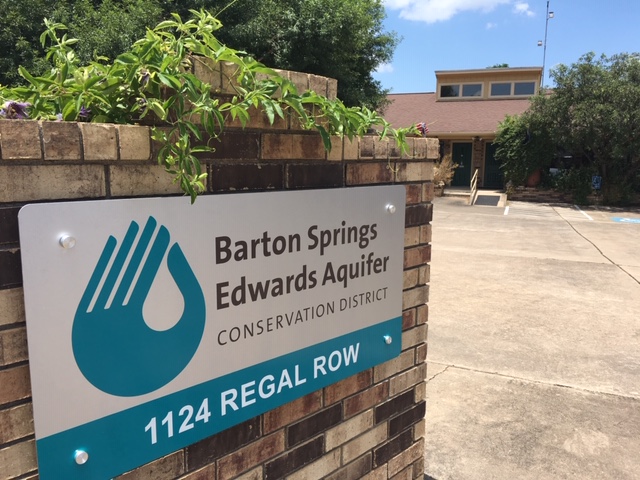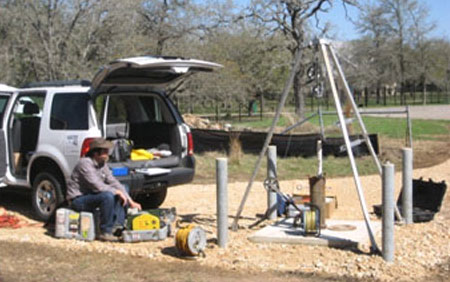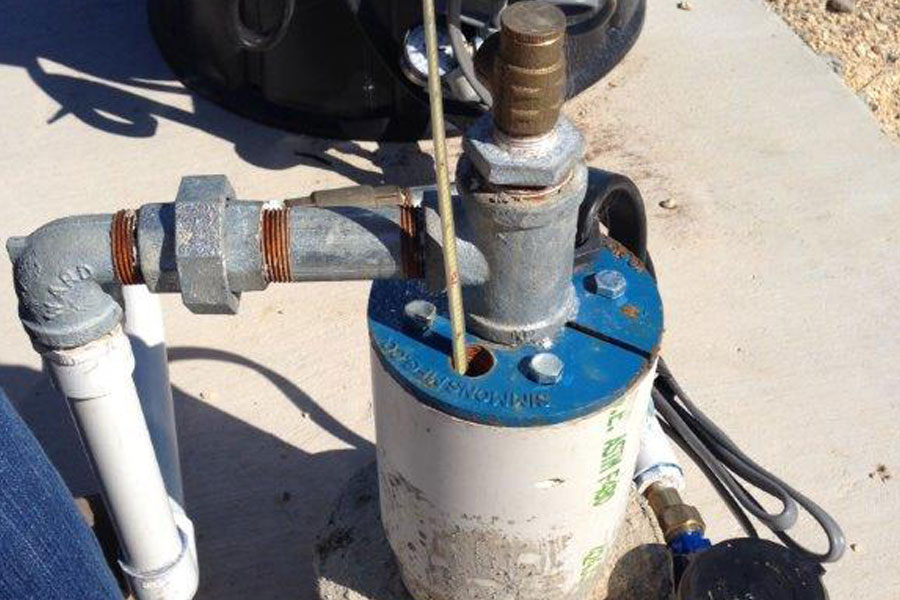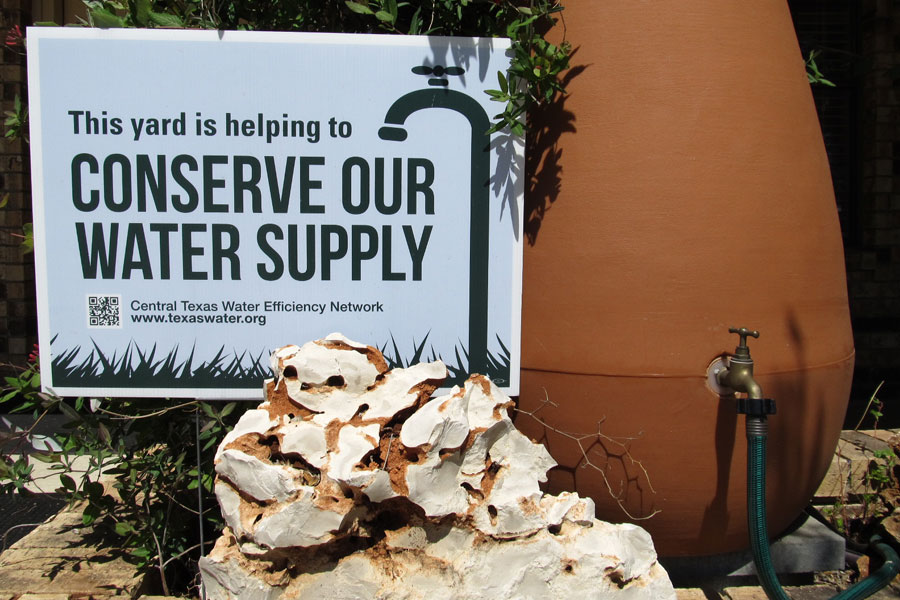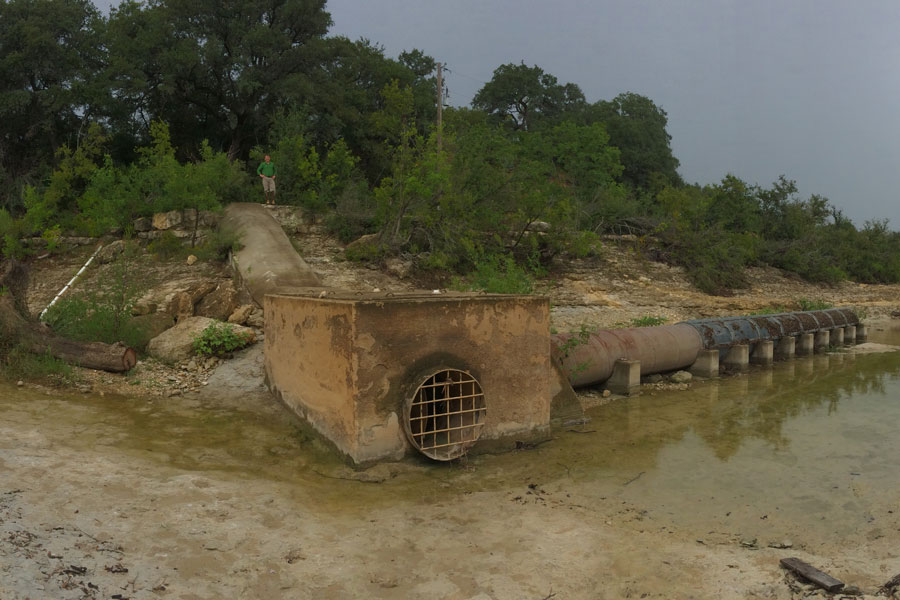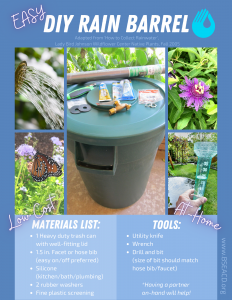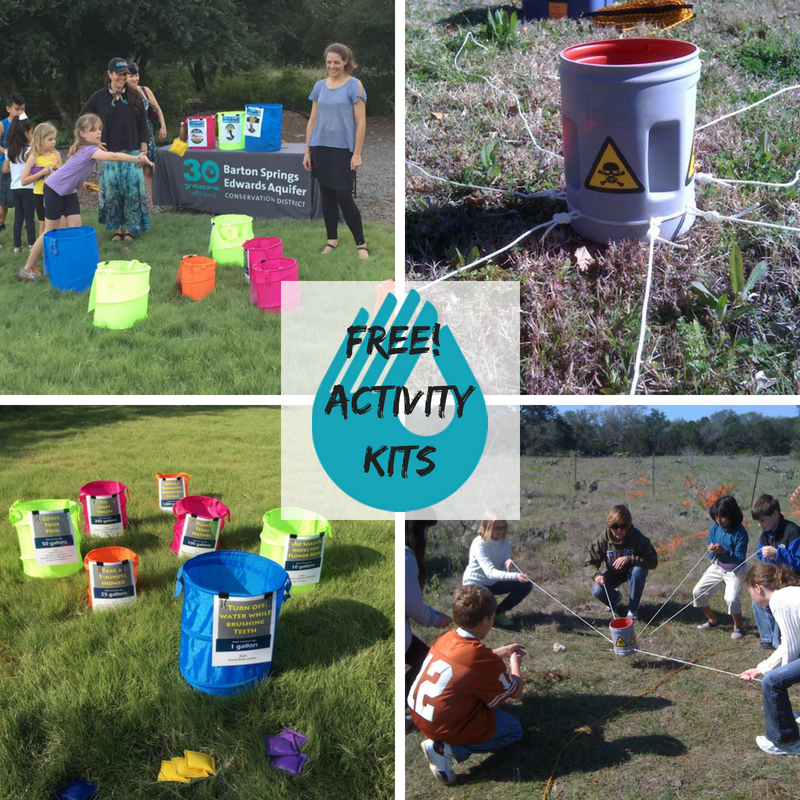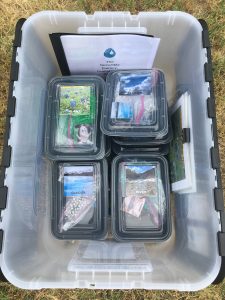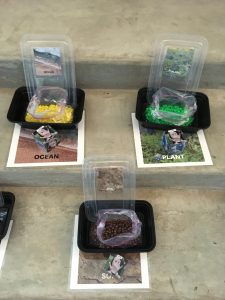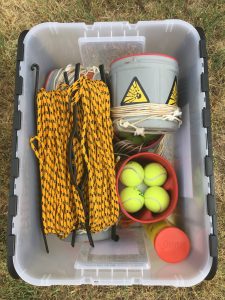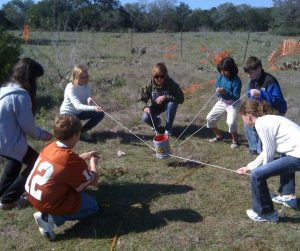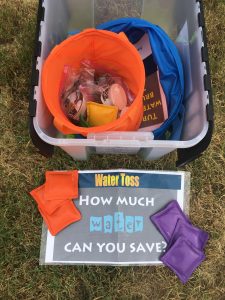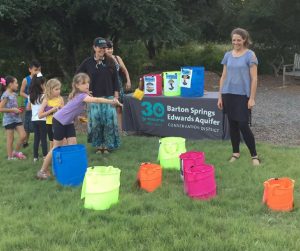Videos, Activities & Resource Kits
Educational Videos
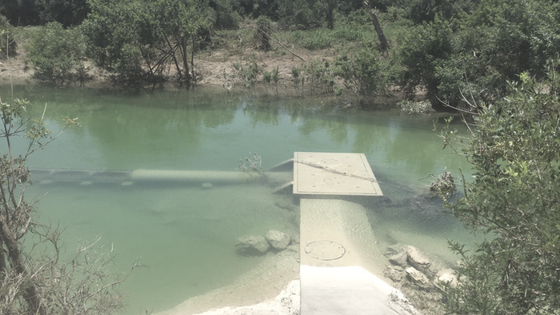
BSEACD Videos
Science in 60 Seconds
- Streamflow Measurement: Streamflow measurements provide the quantity of water passing a location along a stream usually in cubic feet per second (cfs). Good water management is founded on reliable streamflow information made in the field.
- Water Well Check Up: Learn how you can gather and submit your own sample to the local laboratory. As always, we’ll be here to help you understand your results and make recommendations that might be helpful.
- Turbidity: Learn more about turbidity.
- What is pH?: pH stands for potential of hydrogen. Sounds complicated if you’re not a science person, right? We break it down.
- Water Conductivity: Water conductivity is the measure of a water’s ability to pass an electrical current. Because dissolved salts and other inorganic chemicals conduct electrical current, conductivity increases as salinity increases, which is the overall saltiness of a body of water.
- Downhole Video Cameras: We discuss the importance of using downhole video cameras in district wells.
Other BSEACD Videos
- What is the role of BSEACD?: Principal Hydrogeologist Brian Smith explains the role and mission of the District.
- Do I live in the District?: “Do I live in the District?” That’s a popular question for us here at BSEACD? It’s also an important one! All wells within the District are required to be registered with the District. Learn whether you live in BSEACD’s jurisdiction
- How to Check the District’s Drought Status: Learn how to check the District’s latest drought status.
- Edwards Aquifer Signs: WHAT’S IN A SIGN? You’ve probably seen those Edwards Aquifer signs as you’re driving around Austin. But what do they mean and why should you care? Principal Hydrogeologist Brian Smith explains how recharge works and why we all need to do our part to protect the Edwards Aquifer.
- Well Site Visits: One way the District measures what’s happening in the Edward’s aquifer is by monitoring about 40 plus wells throughout Hays and Travis counties. Hydrogeologist Technician Justin Camp takes along for his well site visits and explains how it all works!
- Antioch Cave: Did you know that a majority of recharge to the Barton Springs segment of the Edwards Aquifer is through recharge features such as caves? About 2 miles upstream from Buda on Onion Creek is an important water feature that contributes to Barton Springs.
- The Barton Springs Pool: An Austin Icon: The Barton Springs Pool is an Austin icon! It’s a natural destination for folks to cool off from the Texas Heat. Our Principal Hydrogeologist Brian Smith explains more about the spring water and what is being doing to protect the Barton Springs segment of the Edwards Aquifer.
- Monitoring the Edwards and Trinity Aquifers: The Edwards and Trinity aquifers are significant sources of water for industrial and agricultural use, for ecological resources in Central Texas, and are the sole sources of water for many people in the area. That is why it is important for the District to monitor and understand the hydraulic relationship between the two aquifers. We have six Westbay Multiport Monitoring Wells throughout the District that provide us with an abundance of information on what’s happening with the Edwards and Trinity Aquifers.
- How Groundwater Modeling Works: Groundwater plays an important role in our everyday lives and communities. It is used for both public and private supply, irrigation, livestock, and other services. That is why it is vital that we fully understand how the groundwater system works. The District’s Aquifer Science team is currently working on the Trinity Aquifer in-house groundwater model to help us plan and conserve for generations to come. The District is also playing a role in helping to guide model construction for Southwest Research Institute’s Blanco River Basin numerical groundwater model, also known as BRATWURST.
- Borheim Quarry: This hidden treasure in Hays County tells the District a lot about the Edwards and Trinity Aquifers. Known by some as the Borheim Quarry, the City of Austin purchased this land years ago for watershed protection purposes. Check out the video above with Principal Hydrogeologist Brian Smith, to learn more about the connection to Barton Springs.
- BSEACD Weather Station: BSEACD’s weather station is online! It contains information on daily and weekly rain amounts, winds, relative humidity, dew point, and soon it include soil moisture and solar radiation measurements.
- Video From Inside A Well: It is important for the district to understand how a well is completed and which aquifer it is in. We use downhole cameras to get a look at a well’s construction and geology.
- Well Construction: A properly constructed well can provide clean, safe water for years. Well construction standards help protect water quality and extend the service life of the well. A poorly constructed well can have poor water quality and/or limited access to groundwater over time.
- What Is Dye Tracing and How Is It Used in Groundwater Research?: Groundwater dye traces use non-toxic dye to determine flow paths in aquifers. In the Barton Springs segment of the Edwards Aquifer, dye traces have shown that water can travel as fast as 17 miles in 3 days.
- Recharge: Karst recharge features like caves, swallets, and faults in creek beds replenish aquifers by allowing surface water into the groundwater system. Features vary in size and volume of water they can channel into the groundwater system.
- Springs: Springs and artesian wells are indicators of the overall health of an aquifer. Healthy springs indicate healthy aquifers. Artesian flowing wells and increased springflow indicate high groundwater levels. Springs help sustain the flow in area creeks and rivers.
- Blanco River Springs: Springs provide important base flow for the Blanco River. Hill Country Trinity Aquifer springs flow even when it’s not raining. As the Blanco flows downstream, it eventually passes over the Edwards Aquifer Recharge Zone and helps replenish the Edwards Aquifer.
General Groundwater-Related Videos
Edwards Aquifer:
- Austin Underground: A variety of local experts talk about Edwards Aquifer geology, hydrogeology, biology, and threats/solutions. (4 video segments, City of Austin Watershed Protection Department)
- Inner Space Cavern: Inside an Aquifer: A video series that covers everything from the basics, to chemical processes that drive cave formation, to the advanced research done in the cave. (16 video segments, UT Environmental Science Institute)
- Deep Underground with Balcones Canyonlands Preserve Biologist: A look at monitoring efforts for Balcones Canyonlands Preserve cave and the role of caves play as indicators of aquifer health. (1 video, Austin Wildlands BCP and WQPL)
- Recharge in Action: Watch as staff clear debris from a karst feature in Onion Creek. Air bubbles out as water makes its way into the feature. (1 video, Austin Wildlands BCP and WQPL)
- Aquifers and Streams: Texas Aquatic Science- Chapter 7: Many of the cave, springs, and streams in this video are related to the Edwards Aquifer. Beautiful footage and good discussion about recharge, endangered species, and unique underground habitats. (Part of the Texas Aquatic Science educational resource guide by Texas Parks and Wildlife, more info)
Trinity Aquifer
- Upper Onion Creek Dye Tracing: An explanation of dye tracing methods and footage from a recent dye trace. (1 video, Hays Trinity Groundwater Conservation District)
- Monitor Wells: Discussion of the need for informed management and the role of monitor wells. (1 video, Hays Trinity Groundwater Conservation District)
- Exploring the Trinity Aquifer: An overview of the Upper, Middle, and Lower Trinity Aquifers, cave formation in the Trinity, and area springs. (1 video, Hays Trinity Groundwater Conservation District)
Groundwater Management
- Aquifers in Texas: An overview of the Texas aquifers, role of groundwater in the Texas economy, and groundwater conservation districts. (1 video of many, Texas Water Development Board, more info)
- How do Aquifers Work?: A discussion of porosity and permeability of the major Texas aquifers (including Edwards and Trinity), and explains common terms like outcrop/subcrop and confined/unconfined aquifers. (1 video of many, Texas Water Development Board, more info)
- Groundwater Budget and Availability Models: Discussion of the water cycle and the water budget as it relates to inflows and withdrawls. (1 video of many, Texas Water Development Board, more info)
- Using Groundwater Availability Models in Water Planning: Overview of rule of capture, genesis of groundwater conservation districts, stakeholder involvement, planning tools (such as desired future conditions and modeled available groundwater assumptions) for groundwater in Texas. (1 video of many, Texas Water Development Board, more info)
Water Wells:
- How A Water Well is Drilled: A view of key elements of well construction, considerations that help protect water quality, pump and pressure tank operation, and home owner guidance. (1 video, American Ground Water Trust)
Monitoring:
- Measuring Groundwater with an Electric Tape: An overview of how water level measurements are taken. (1 video, US Geological Survey).
- Streamgages: The Silent Superheros: National experts discuss how streamflow gages provide real-time data, how the data is used, and the challenges associated with maintaining the streamflow network. (1 video, US Geological Survey).
- Effects of Urbanization on Stream Ecosystems: Discussion of stream ecosystems, their role in water quality protection, and threats. (1 video, US Geological Survey).
Rainwater Harvesting:
- Introduction to Rainwater Harvesting: An overview of residential rainwater harvesting system components. (1 video, Cow Creek GCD)
- Creating a Rainwater Harvest System: Tips and tricks to installing home rainwater harvesting systems. (1 video, Cow Creek GCD)
- Residential Rainwater Harvesting: A tour of a residential rainwater harvesting system with John Kight, one of the top rainwater harvesting experts in the United States. (1 video, Cow Creek GCD)
DIY Rain Barrel Instructions
Click to download the free DIY Rain Barrel Instructions (PDF)
Teaching Activity Kits
The District has several free water-related learning activity kits that can be loaned out to local schools or groups.
To request a Loaner Activity Kit please email edu@bseacd.org for availability.
